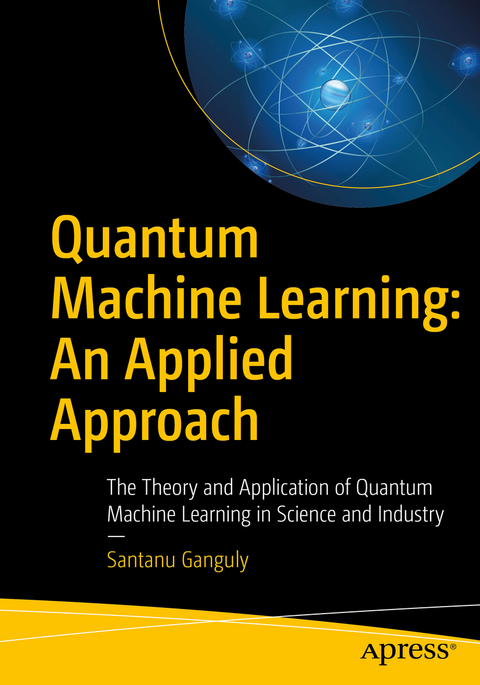
Quantum Machine Learning: An Applied Approach
Apress (Verlag)
978-1-4842-7097-4 (ISBN)
The first three chapters offer insights into the combination of the science of quantum mechanics and the techniques of machine learning, where concepts of classical information technology meet the power of physics. Subsequent chapters follow a systematic deep dive into various quantum machine learning algorithms, quantum optimization, applications of advanced QML algorithms (quantum k-means, quantum k-medians, quantum neural networks, etc.), qubit state preparation for specific QML algorithms, inference, polynomial Hamiltonian simulation, and more, finishing with advanced and up-to-date research areas such as quantum walks, QML via Tensor Networks, and QBoost.
Hands-on exercises from open source libraries regularly used today in industry and research are included, such as Qiskit, Rigetti's Forest, D-Wave's dOcean, Google's Cirq and brand new TensorFlow Quantum, and Xanadu's PennyLane, accompanied by guided implementation instructions. Wherever applicable, the book also shares various options of accessing quantum computing and machine learning ecosystems as may be relevant to specific algorithms.
The book offers a hands-on approach to the field of QML using updated libraries and algorithms in this emerging field. You will benefit from the concrete examples and understanding of tools and concepts for building intelligent systems boosted by the quantum computing ecosystem. This work leverages the author’s active research in the field and is accompanied by a constantly updated website for the book which provides all of the code examples.
What You will Learn
Understand and explore quantum computing and quantum machine learning, and their application in science and industry
Explore variousdata training models utilizing quantum machine learning algorithms and Python libraries
Get hands-on and familiar with applied quantum computing, including freely available cloud-based access
Be familiar with techniques for training and scaling quantum neural networks
Gain insight into the application of practical code examples without needing to acquire excessive machine learning theory or take a quantum mechanics deep dive
Who This Book Is For
Data scientists, machine learning professionals, and researchers
Santanu Ganguly has been working in the fields of quantum technologies, cloud computing, data networking, and security (on research, design, and delivery) for over 21 years. He works in Switzerland and the United Kingdom (UK) for various Silicon Valley vendors and ISPs. He has two postgraduate degrees (one in mathematics and another in observational astrophysics), and research experience and publications in nanoscale photonics and laser spectroscopy. He is currently leading global projects out of the UK related to quantum communication and machine learning, among other technologies.
Ch 1: Rise of the Quantum Machines: Fundamentals.- Ch 2: Machine Learning.- Ch 3: Neural Networks.- Ch 4: Quantum Information Science.- Ch 5: QML Algorithms-I.- Ch 6: QML Algorithms-II.- Ch 7: Quantum Learning Models.- Ch 8: The Future of QML in Research and Industry.
| Erscheinungsdatum | 31.08.2021 |
|---|---|
| Zusatzinfo | 357 Illustrations, black and white; XIX, 551 p. 357 illus. |
| Verlagsort | Berkley |
| Sprache | englisch |
| Maße | 178 x 254 mm |
| Themenwelt | Mathematik / Informatik ► Informatik ► Datenbanken |
| Informatik ► Theorie / Studium ► Algorithmen | |
| Informatik ► Theorie / Studium ► Künstliche Intelligenz / Robotik | |
| Schlagworte | Artificial Intelligence • Grover's search algorithm • Grover’s search algorithm • machine learning • Quantum Computing • quantum mechanics |
| ISBN-10 | 1-4842-7097-5 / 1484270975 |
| ISBN-13 | 978-1-4842-7097-4 / 9781484270974 |
| Zustand | Neuware |
| Informationen gemäß Produktsicherheitsverordnung (GPSR) | |
| Haben Sie eine Frage zum Produkt? |
aus dem Bereich


